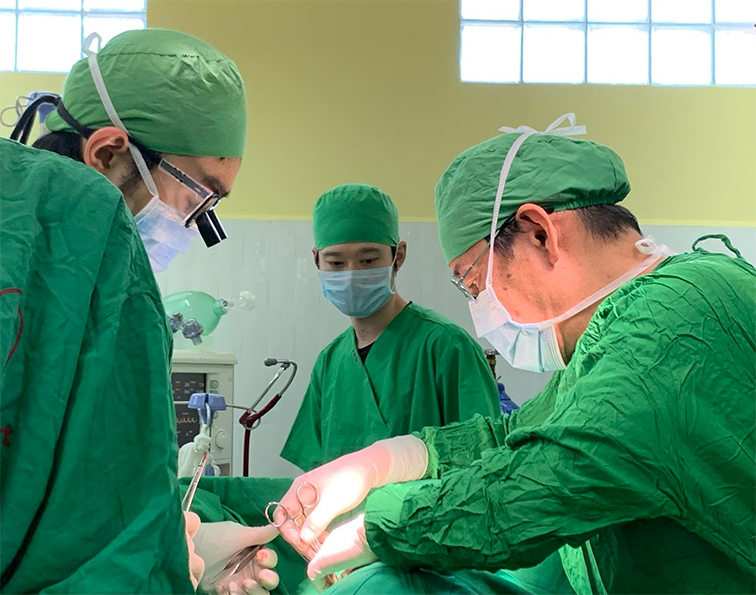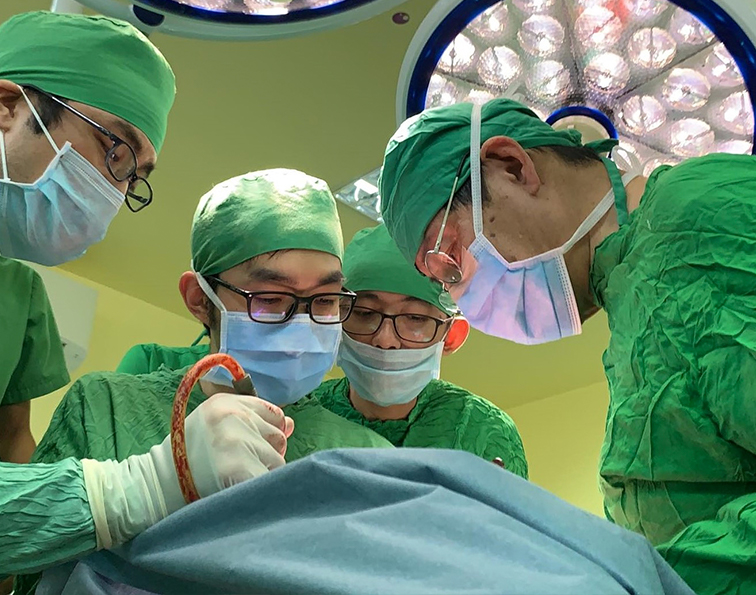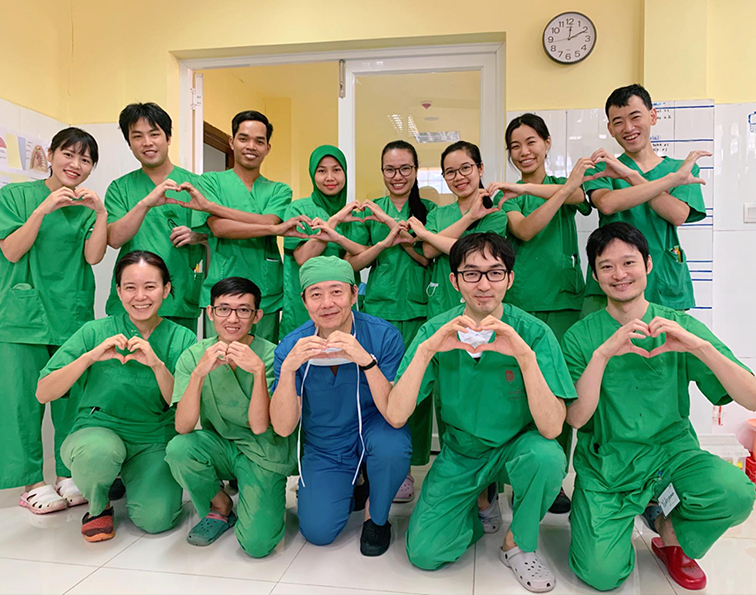Susaday from Cambodia! Recently,we had a 3 month old girl come in for surgery to correct biliary atresia (a fatal defect in the connection between the gall bladder and liver). She had been diagnosed at a local hospital when she was one month but returned home when the doctors decided not to operate due to the low chance of survival. Her mother heard about Japan Heart Children’s Medical Center on the radio and came to our hospital.
A 16 year old girl was also admitted, with a recurrence of a longitudinal tumor that would be difficult to operate on due to tumor metastasis.
These children were operated on by a pediatric surgery team from Keio University Hospital and anesthesiologists with volunteering experience in Myanmar. This is the second time that these doctors have come to Cambodia. Professor Kuroda from Keio University Hospital originally knew Dr. Yoshioka, Japan Heart’s founder and chief advisor, and was interested in contributing to Japan Heart’s work overseas. The University and Japan Heart had already worked together a few years ago to perform a difficult surgery here in Cambodia.

According to Dr. Kuroda, when performing difficult surgery in Cambodia, the doctors have to coordinate the schedule and patient information carefully. It is necessary to check the equipment and drugs over and over. Behind the scenes, there are people who responsible for post-surgical management, those who plan the schedules, and those who arrange the equipment and materials. He felt that though, he couldn’t meet all of them, I felt that this operation’s success hinged on the cooperation of many people who remained and supported him in Japan.
Once Dr. Kuroda was actually in Cambodia, he could feel the motivation of the staff working there. In Cambodia, there are medical volunteers from many countries, but often they are self-contained health providers. At Japan Heart, there is a flow of cooperation between Japanese and Cambodian medical teams. When Dr. Kuroda got the chance to share Japanese medical technology and expertise with Cambodian staff, he was impressed to see them work hard to improve the medical field of their country.

He noticed the role of Japanese and Cambodian doctors is different as well. In Cambodia, there are many things that only a doctor can do, but doctors themselves are scarce. In the future, with the hope and expectation of further growth, Dr. Kuroda hopes to carry out surgeries with Cambodian doctors and passed on knowledge and skills to help those that need it most.
Although we use email to share information about patients before surgery, there are some points that are difficult to convey accurately via text, such as skin condition and the patient’s comfort level. Also, the number of tests that can be performed in Cambodia is limited so the information that can be delivered is less accurate. Overall, it is more difficult to assess the exact condition of an affected child until you actually meet them.
However, the child and their family take the effort to come to our hospital, to wait for surgery, often as a last hope. Dr. Kuroda said, “The affected child and their family are going through this surgery together. I will do my best whether in Japan and Cambodia.” Regardless of location or nationality, we deliver the best medical care to those who seek it. This is the concept of Japan Heart.

International Training Nurse Umeno Hirona

